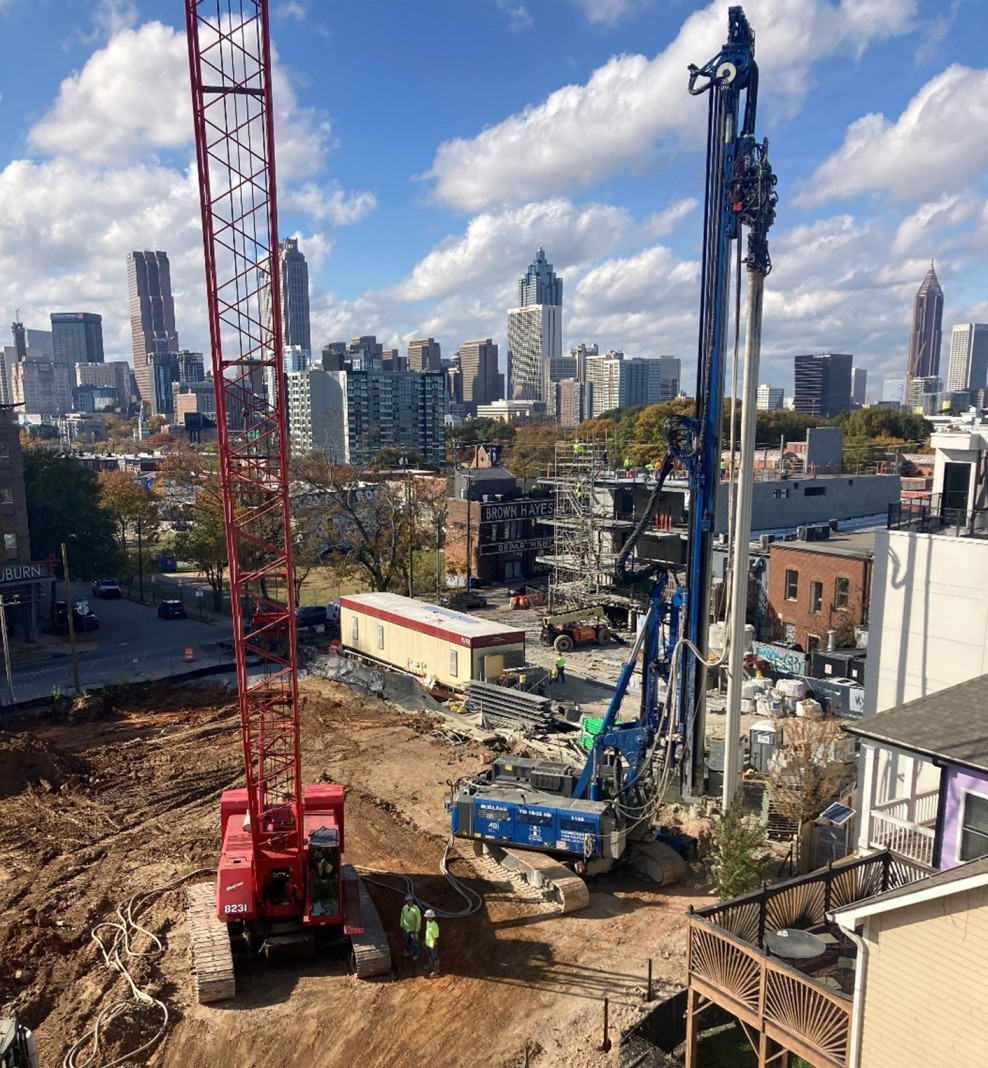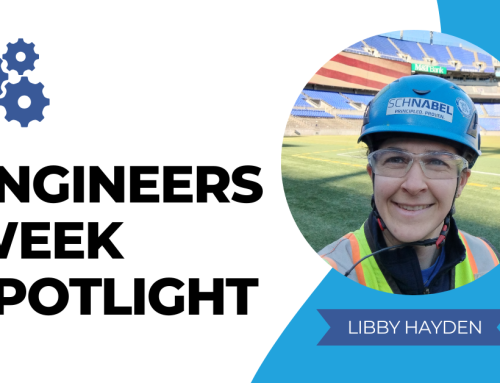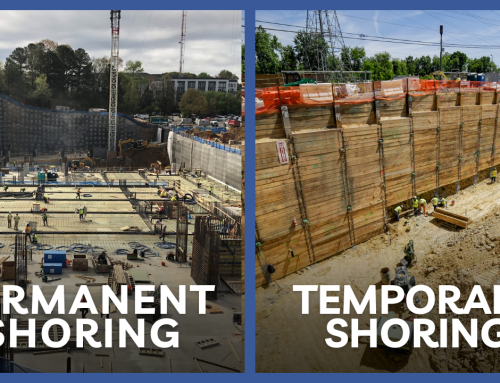Deep soil mixing is a geotechnical method used in construction to improve the properties of soil. It involves the mechanical blending of in-situ soil with a cementitious binder to create a stronger and more stable ground to work on. This technique is particularly useful when dealing with soft clay, silt, or loose sand, which are prone to consolidation and liquefaction. Deep soil mixing can also be used to decrease the permeability of the soil to reduce groundwater flow.
Contents
- Introduction
- Understanding Deep Soil Mixing
- Benefits of Deep Soil Mixing
- The Deep Soil Mixing Process
- Applications of Deep Soil Mixing
- Limitations of Deep Soil Mixing
- Environmental Considerations
- Case Studies
- Conclusion
- FAQs (Frequently Asked Questions)
Introduction
In construction projects, encountering weak or permeable soil can pose significant challenges. Deep soil mixing offers an effective solution by improving the engineering properties of the soil. This article explores the process, benefits, applications, and limitations of deep soil mixing, highlighting its importance in geotechnical engineering.
Understanding Deep Soil Mixing
Deep soil mixing is a ground improvement technique that involves blending cementitious binders with in-situ soil to achieve a more homogenous and stronger composite material. This composite material is often referred to as soilcrete. The process typically utilizes a specialized mixing tool, such as a hollow auger, which is rotated into the ground to the desired depth. As the auger spins, a binder, typically consisting of a cement and water slurry, is pumped through the center of the auger and injected into the soil, resulting in a uniform mixture. Bentonite can be added to the slurry to further reduce the permeability of the soilcrete.
Benefits of Deep Soil Mixing
- Increased Load-Bearing Capacity: By incorporating cementitious binders, soil mixing significantly improves the load-bearing capacity of the soil. This allows for the construction of heavier structures on otherwise weak ground.
- Ground Water Cut-Off: Deep soil mixing can be used to construct earth-retaining structures that also provide a barrier to the flow of groundwater. To accomplish this, a series of soilcrete columns are drilled in an overlapping manner, resulting in the formation of a continuous groundwater cutoff wall. The soilcrete columns are typically reinforced with steel beams to provide the structural strength required for the wall.
- Enhanced Stability: Deep soil mixing stabilizes loose and unstable soil by creating a solid mass. The blended soil becomes more resistant to settlement, reducing the risk of structural damage.
- Prevention of Lateral Spreading: In areas prone to seismic activity, deep soil mixing can prevent lateral spreading and liquefaction, which occurs when loose soil moves horizontally during an earthquake. The technique increases the soil’s shear strength, reducing the potential for ground displacement.
The Deep Soil Mixing Process
The deep soil mixing process involves several key steps:
- Site Inspection: A thorough site inspection is conducted to assess the soil composition, strength, and geotechnical properties. This information helps determine the appropriate binder composition and mixing parameters.
- Design and Planning: Based on the results of the site inspection, engineers plan for the project by specifying the binder type, mixing tool, mixing depth, and spacing between columns. Careful planning ensures optimal results and cost-effectiveness.
- Mixing Operation: The mixing tool is inserted into the ground, and the binder is injected as the auger rotates. The tool is gradually withdrawn while continuously injecting the binder, creating columns or panels of improved soil. Quality control measures are implemented to ensure consistent mixing and desired strength.
- Curing and Strength Gain: After mixing, the soil-binder mixture requires sufficient time to cure and gain strength. The curing process can take several days or weeks, depending on the binder type and environmental conditions.
Applications of Deep Soil Mixing
Deep soil mixing has a wide range of applications in geotechnical engineering, including:
- Foundation Support: Deep soil mixing can be used to strengthen weak soil beneath foundations, allowing for the safe construction of buildings, bridges, and other structures.
- Embankment and Slope Stabilization: By reinforcing embankments and slopes with improved soil, deep soil mixing can be used to help prevent landslides and slope failures, ensuring stability and safety.
- Groundwater Control: In areas with high groundwater levels, deep soil mixing can create impermeable barriers, preventing water seepage and protecting underground structures.
- Environmental Remediation: Deep soil mixing is also employed in environmental remediation projects to stabilize contaminated soil, preventing the spread of pollutants and facilitating site cleanup.
Limitations of Deep Soil Mixing
While deep soil mixing offers many advantages, it is essential to consider its limitations:
- Depth Constraints: Deep soil mixing is most effective in shallow to medium depths. Extremely deep soil mixing can be challenging and may require alternative methods.
- Soil Compatibility: The success of deep soil mixing depends on the compatibility between the soil and binder. Certain soil types may not respond well to the mixing process, requiring alternative techniques.
- Site Access and Space: Deep soil mixing requires sufficient space and access for the mixing equipment. Limited site access or congested urban areas can pose logistical challenges.
Environmental Considerations
Deep soil mixing, like any construction technique, has environmental considerations:
- Energy Consumption: The equipment and machinery used in deep soil mixing consume energy. Careful planning and design can minimize energy consumption and environmental impact.
- Emission Control: Measures should be taken to control emissions from construction equipment, ensuring compliance with environmental regulations.
- Waste Management: Proper management of waste materials, such as excess soil and spoils generated during the mixing process, is crucial to minimize environmental impact.
Case Studies
- Waldos Old Fourth Ward (O4W), Atlanta, GA: Deep soil mixing was used during the O4W project to provide an earth retention system that also acted as a groundwater cut-off wall for a new mixed-use development. Learn more about Schnabel’s role in this project here. Information about the mixed-use development can be found here.
- Patriots Plaza (Square 537): The difficult soil conditions at this project required Schnabel to use deep soil mixing along with other methods such as jet grouting and secant piles to stabilize the soil. The end result was the installation of an earth retention system covering more than 68,000 square feet. Learn more about Schnabel’s role in this project here.
Conclusion
Deep soil mixing is a valuable geotechnical technique for improving weak or problematic soil. By blending in-situ soil with cementitious binders the soil’s load-bearing capacity, stability, and resistance to settlement are enhanced. Deep soil mixing has numerous applications in construction projects, providing a reliable and cost-effective solution when it is necessary to enhance the properties of existing soil. However, it is crucial to consider the limitations and environmental factors associated with the technique to ensure sustainable and responsible use.
FAQs (Frequently Asked Questions)
Q: Is deep soil mixing suitable for all soil types? A: Deep soil mixing is generally effective for soft clay, silt, and loose sand. However, certain soil types may not respond well to the process, requiring alternative ground improvement methods.
Q: How long does it take for the soil-binder mixture to gain strength? A: The curing process can vary depending on factors such as binder type, soil composition, and environmental conditions. It typically takes several days to weeks for the mixture to gain sufficient strength.
Q: Can deep soil mixing prevent landslides and slope failures? A: Yes, deep soil mixing can stabilize embankments and slopes, preventing landslides and slope failures by reinforcing the soil and increasing its shear strength.
Q: Does deep soil mixing have any environmental impact? A: Like any construction technique, deep soil mixing has environmental considerations. Proper planning and implementation can help minimize energy consumption, control emissions, and manage waste materials.
Q: Where can I learn more about deep soil mixing? A: To learn more about deep soil mixing and its applications, you can refer to geotechnical engineering textbooks, and academic journals, or consult with a professional geotechnical engineer. Learn more about Schnabel’s deep soil mixing solutions here.






